Understanding Imperfections and Grains in English Willow Cricket Bat
A perfect bat which feels right to the batsman makes him confident to hit more shots and to play comfortably is a great asset of any cricketer.
As a cricketer when you choose the first bat for your career, it is important to know everything about it. The most popular bat used by the professional cricketers is an English willow cricket bat. This article covers everything about an English Willow, its imperfections and how you can choose one.
Manufacturing
Cricket bats are manufactured in England, Australia, New Zealand, and subcontinents of Asia (India and Pakistan). A cricket bat is manufactured with a wood called willow which belongs to the family Salix. It is also called white willow or cricket bat willow.
Willow is grown in the cold and moist regions of Northern Hemisphere. In India, it is found in regions of Jammu and Kashmir and is called Kashmir willow. Cricket bats are divided into two categories- English Willow cricket bat or Kashmir Willow cricket bat.
English willow is specifically grown for manufacturing cricket bats and they are visibly different to Kashmir willow bats. English willow is white while Kashmir willow is brownish in colour. Kashmir willow bats are heavier than English willow bats and much cheaper to buy.
English Willow vs. Kashmir Willow
The Kashmir Willow is preferred by many players especially those who just started the playing, playing for fitness or having low budget. The English Willow is considered the best and ideal wood for playing matches for clubs, Ranji’s or international matches.
Imperfections of an English Willow
The condition in which a tree grows has a great impact on its color and texture and also its suitability for making the cricket bat. The strong winds, soil structure, the humidity, the sunlight, water i.e. almost everything, contributes in growth of a tree. There can be some imperfections in the wood which passes on to the bat.Here is a list of imperfections found in an English Willow and how do they affect the performance-
-
Pin Knot- It is the most commonly found imperfection which has a size of maximum 1 cm and is still living. It is caused by shorter limb of a tree which dies off due to some reasons cause a tiny knot in the tree which is called a pin knot. Usually when a tree is cut, there are some little living limbs of it which turns into a pin knot as they die. Pin knots are mostly round and you feel them when you touch the area. Remember - Every spot on the bat wood is not a Knot.
On the cricket bat, pin knots may appear on the back and edges of the bat. Do they impact performance? No, they do not affect the performance of the bat. These types of knots are more visible in Grade 5, Grade 4 and Grade 3 bats.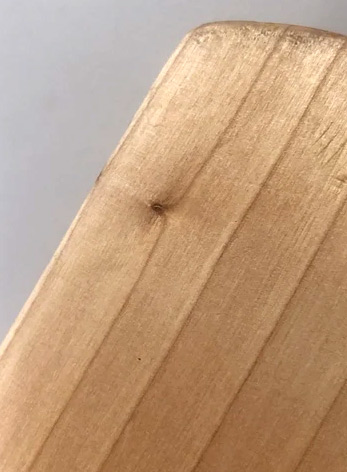
-
Dead knot- A dead knot is caused due to a branch falling out after a long time due to insufficiency of sunlight reaching to it. As it grows for some time, it forms a knot.
When a tree is cut down after a long time, these dead knots are common. As for the cricket bat, it is better without a dead knot. They are normally found on the back side of the bat. It does not cause any impact on the performance, though.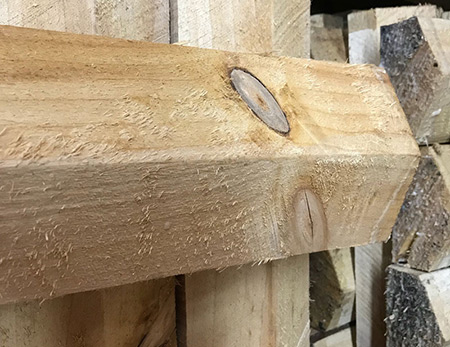
-
False Growth- The tree grows fast in its initial years and the bark stretches out, creating growth rings which indicates its growth. Some factors sometimes put a stop to the growth of the tree i.e. drought or fire, it creates a false grain which runs parallel to the normal grains.
It is a common imperfection found in cricket bats. It is not a weakness and bats do not usually snaps at false growth line.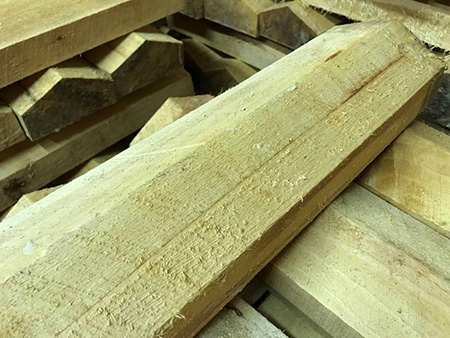
-
Specks- There is two types of specks you can see on your cricket bat. One is a light speck, and another is the heavy speck. These are caused by the insects which lay their eggs inside the bark and feed on the nutrients of the tree. The larvae leave the tree, leaving the specks.
They can be seen parallel with the grains. These are purely cosmetic and do not affect the performance at all.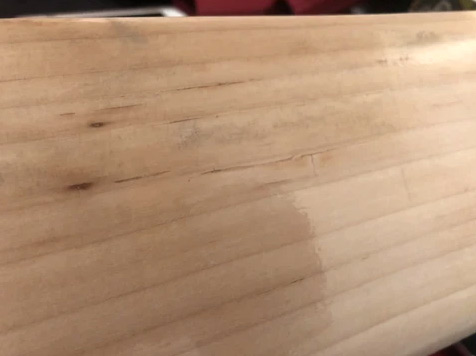
-
Butterfly Stain- It is the sign of the strength of the bat. It is in the shape of wings of butterfly and is caused due the pruning and frost damage. It actually adds strength to the bat. Many players reject the bats with a butterfly staining due to its look but it is the best kind of willow actually which ensures a longer life of the bat.
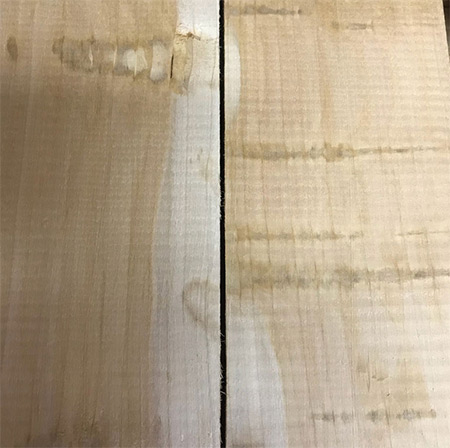
A severe pruning causes scarring in timber which can be seen as wider and more visible white lines. It is called bar stain or tiger stain. The butterfly or bar staining does not affect the performance at all.
These are all the effects of some natural conditions during the lifetime of a tree. Though, these are called imperfections, some of these are the signs of a good willow which ensures that your bat will last longer.
Grades of a cricket bat
Before making a bat purchase, you should know the grades that are available in the market. An English Willow is graded in four types depending on the quality of wood and imperfections present and according to the same best cricket bats are manufactured.The four grades are-
Grade 1- This is the best willow and is kept for the limited edition cricket bats. Of course, they are the most expensive. These blades have a minimum of 6 straight lines visible on the face which may range to 12 lines. They have minimal red timber and a pin knot may be present on the back. A slight redwood timber can be seen on the back and edges but it does not affect the blade. The clean playing area is all that matters.
Grade 2- These blades rank 2nd after Grade 1 and have a little more redwood present than Grade 1. They may have some specks or pin knots visible but what matters is 4 visible straight lines on the face.
Grade 3- These are quality blades with a little more blemishes like redwood on the edges, more specks and pin knots, butterfly staining and the lines are also not-so-straight. These blemishes do not affect the performance of the bats. The right manufacturer can make it worth your money.
Grade 4- These blades are mostly covered of redwood and thus these blades are bleached. These bats are covered with butterfly stain, specks, and redwood. The redwood does not affect the performance but is a sign of the strength of the bat.
Grade 5- Yes, you read it right, some companies mark the bat as Grade 5 Willow and this is the starting range of english willow and front face is covered with Scuff Sheet, Grains Sticker or terry (cloth).
The grading of a bat is done on the quality of willow used. An expensive bat does not ensure the performance but how you feel playing with it, does for you. On your next bat purchase, consider both the factors.
Tight Grains vs. Wide grains
Before getting into the debate that which one is better, it is important to understand the grains and what do they signify.Grains are the vertical lines which appear on the bat and represent the age of the tree as each grain means one year. The grains which appear on the face of a bat are all due to the growth of the tree, the soil quality and the amount of water and sunlight. More number of grains means the tree has grown up slowly.
In today’s market when there is high demand of the bats, the trees are grown in ideal conditions for their faster growth and are cut as soon as they are fit to make bats.
There are two types of bats- with narrow or tight grains or with wide grains. You need to understand the advantages and disadvantages of both before making your purchase-
Tight/ Narrow grains- They have more grains visible on their face indicating that the tree has grown slowly over the years. It is preferred by most of the professionals today.
Advantages-
- As the tree grew up slowly, the wood is dense and fiber compact which makes it strong.
- There is not much need of knocking in. These bats reach their peak performance very quickly. These can be used immediately after obtaining making them the preferred choice of cricketers.
- These bats have a naturally hard surface. There is not much need of knocking in.
Disadvantages-
- These bats are much heavier than the wide grained bats. The wood is denser which makes it heavier.
- The wood is more brittle which makes it prone to breakage.
Wide Grains- These are opposite of narrow grain bats. The trees are grown very quickly, resulting in fewer and wider grains.
Advantages-
- They are lighter than narrow-grained bats.
- It requires a little time knocking in and oiling but when it reaches its peak performance, it stays there for a longer time.
Disadvantages-
- The only problem is that they require some time knocking in before they are ready to use.
Some Major Brands Who Manufacture English Willow Cricket Bats
- Sanspareils Greenlands (SG) – India
- Sareen Sports Industries (SS) - India
- Kookaburra - Australia
- Adidas -India
- Gray-Nicolls - UK
- Gun & Moore (GM) – England
- Standford (SF) – India
- Madras Rubber Factory (MRF) – India
- M & H - UK
Maintenance
English willow bats are recommended for playing with hard cricket ball. Before you start using the cricket bat, it requires knocking in and oiling. Knocking in is the process of striking the surface (face of the bat) with the old cricket ball. This will reduce the risk of bat snapping. The bat’s face needs to be to be oiled with raw linseed oil before play to keep the bat’s surface tacky. It also acts as the protection layer on the wood and gives the better control of the shot to the batter.

